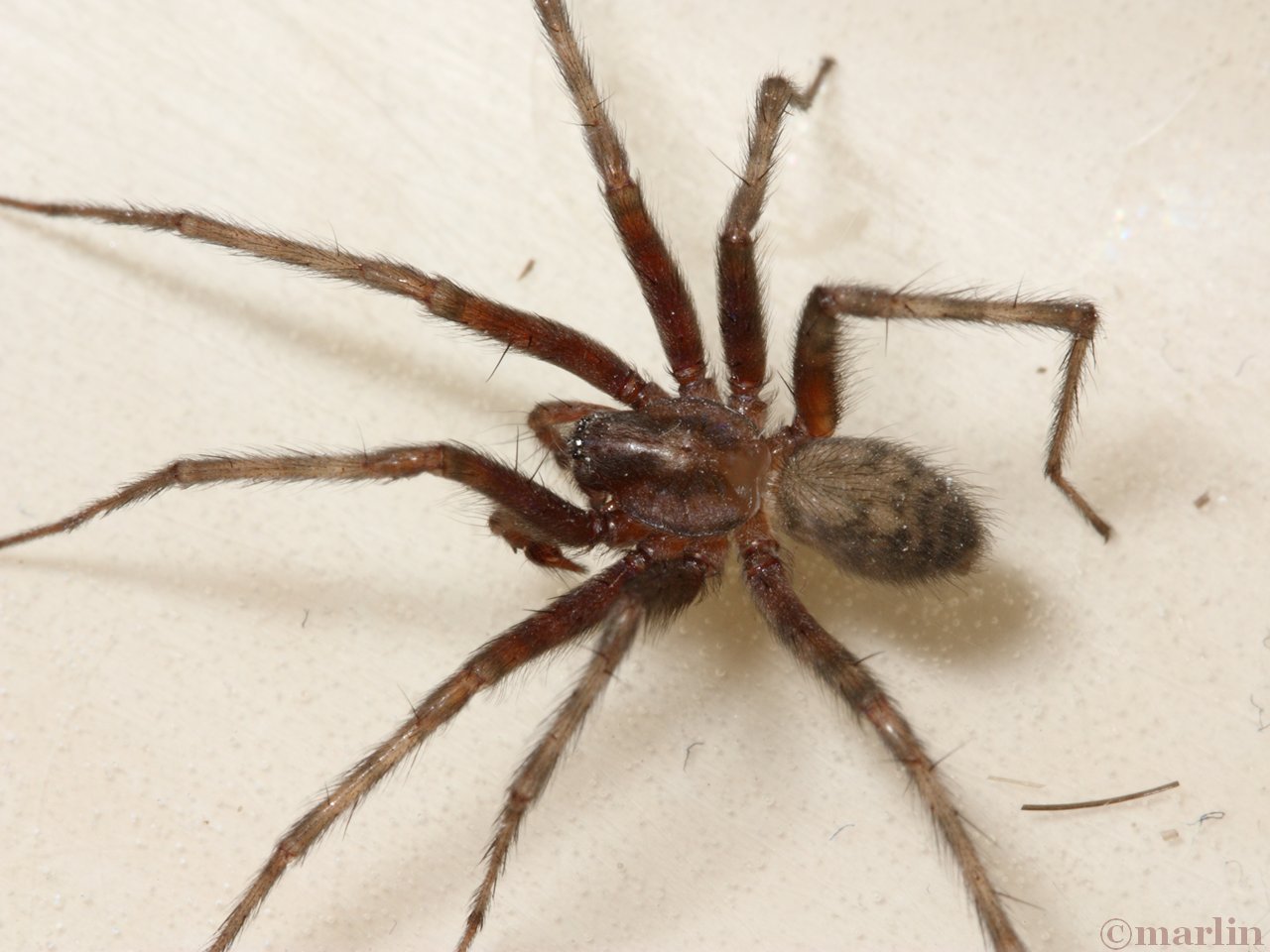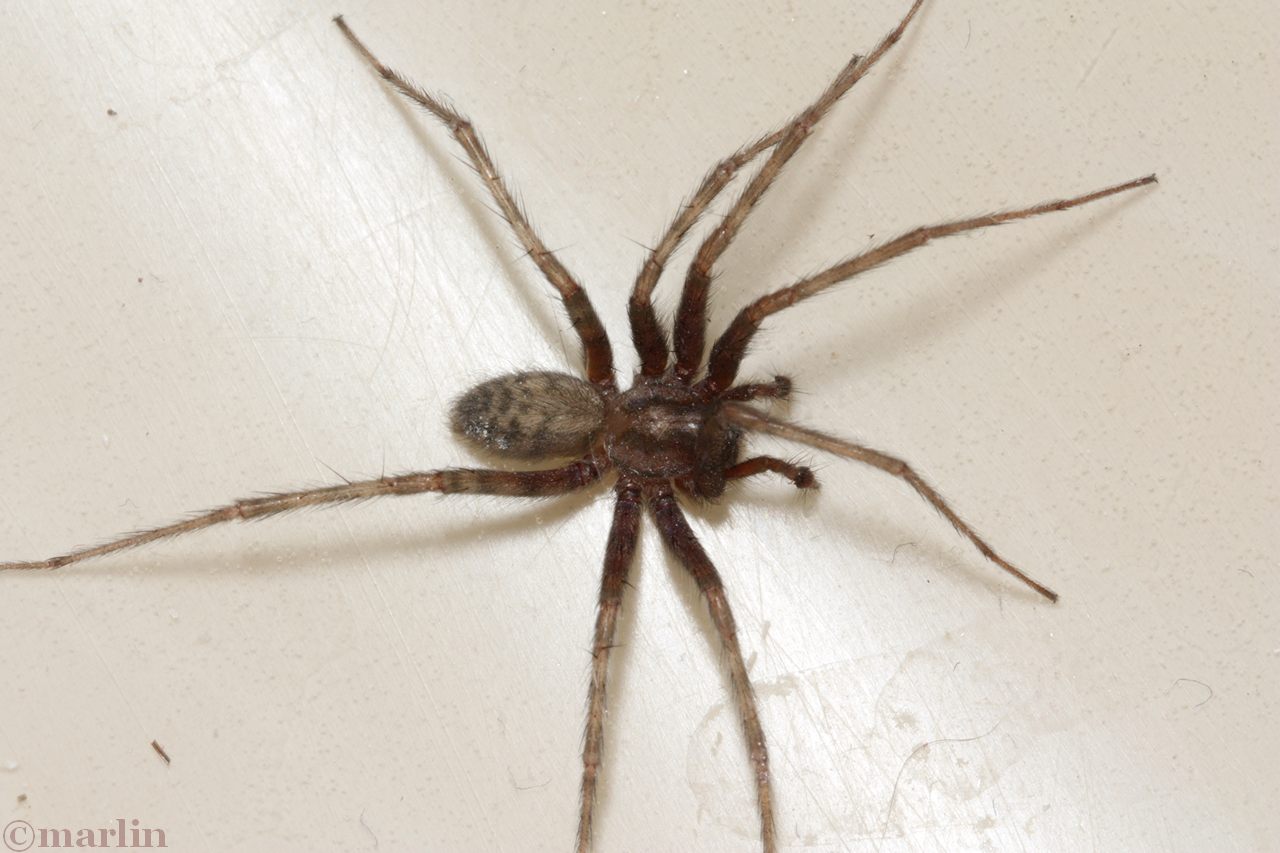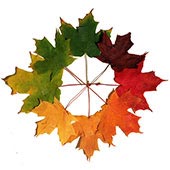Barn Funnel Weaver Spider – Tegenaria domestica
 This brown spider is nowadays commonly called a drain spider, after its habit of becoming trapped in sinks and bathtubs. Many folks mistakenly think they come out of the drain. They can be a startling sight, but are harmless to people and their pets. This spider bites only defensively, and the symptoms are less than a mild bee sting. You’d have to work pretty hard to provoke one of these gentle creatures into biting.
This brown spider is nowadays commonly called a drain spider, after its habit of becoming trapped in sinks and bathtubs. Many folks mistakenly think they come out of the drain. They can be a startling sight, but are harmless to people and their pets. This spider bites only defensively, and the symptoms are less than a mild bee sting. You’d have to work pretty hard to provoke one of these gentle creatures into biting.
 The barn funnel weaver is closely related to the so-called Hobo spider (Tegenaria agrestis), found in the Pacific Northwest. The hobo spider has been rapidly expanding its range since its introduction (from Europe) into the Seattle, Washington area in the 1930s and has moved into neighboring states.
The barn funnel weaver is closely related to the so-called Hobo spider (Tegenaria agrestis), found in the Pacific Northwest. The hobo spider has been rapidly expanding its range since its introduction (from Europe) into the Seattle, Washington area in the 1930s and has moved into neighboring states.
 Though this spider’s body is only 8mm, the legs stretch to 45mm (almost 2 inches), a startling sight indoors. I found this guy (where else?) in my sink. Yow!
Though this spider’s body is only 8mm, the legs stretch to 45mm (almost 2 inches), a startling sight indoors. I found this guy (where else?) in my sink. Yow!
The misdiagnosis of spider bites is a widespread and common problem. The usual description of a spider bite and its symptoms are almost always based on circumstantial evidence; no spider is captured nor is the bite actually witnessed. There are many medical conditions that are misdiagnosed as spider bites, including bacterial, fungal, and viral infections, vasculitis, dermatological conditions, allergies or drug reactions, chemical burns, reactions to poisonous plants, and not least of all, bites or stings from other arthropods. Professionals working in toxicology and poison control clinics report necrotic arachnidism as overdiagnosed and almost always without corroborating evidence [2].
Evidence from scientific studies that refute the diagnosis of necrotic arachnidism is growing. Researchers have determined that many of the usual suspects including the yellow sac spider, the white-tailed spiders, wolf spiders (Lycosidae), and the hobo spider do not cause the suspected symptoms [2]. Numerous studies have found reported spider bites and resulting necrotic lesions are the result of bacterial infections unrelated to bites or stings.
Furthermore, the hobo spider is not of medical concern in its native Europe [2]. It is only the ignorant and fearful population of the United States that unjustly demonizes these creatures; Americans seem to be in love with being terrified of everything and everyone, and more than predisposed to blame spiders or insects for their unexplained dermatological problems. ALSO SEE: Bold Jumping Spider
References
- Thomas Eisner, Maria Eisner, and Melody Siegler, Secret Weapons: Defenses of Insects, Spiders, Scorpions, and Other Many-Legged Creatures
- Misdiagnosis of Spider Bites: Bacterial Associates, Mechanical Pathogen Transfer, and Hemolytic Potential of Venom from the Hobo Spider, Tegenaria agrestis (Araneae: Agelenidae) Melissa M. Gaver-Wainwright, Journal of Medical Entomology 2011 48 (2), 382-388
Spiders Index | Spiders Main | Beetles | Butterflies | Stinging Insects
